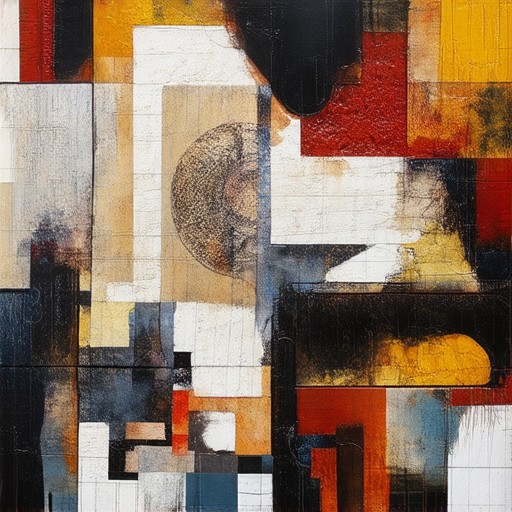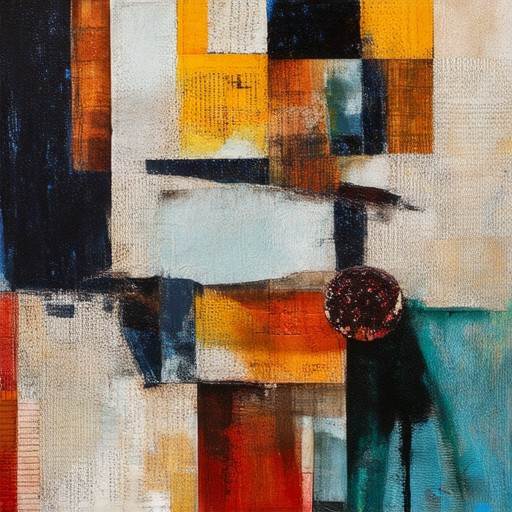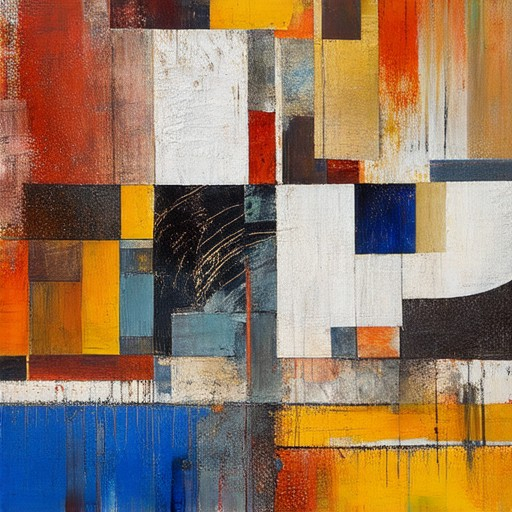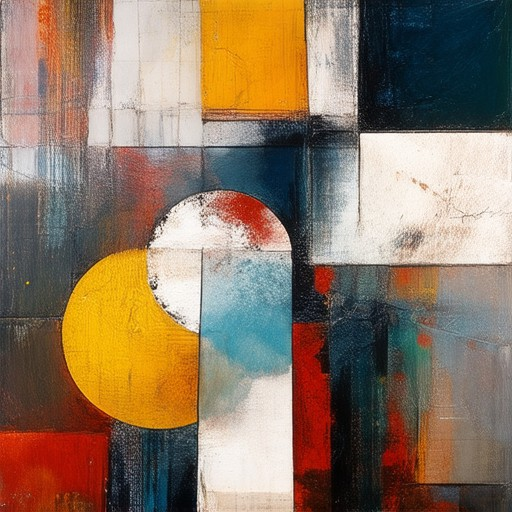Discover the fascinating world of mixed media art with our comprehensive guide designed specifically for beginners. Whether you’re just starting out or looking to expand your artistic horizons, this complete guide offers everything you need to master the art of blending different media forms into one cohesive piece. From understanding the essential materials to exploring innovative techniques, we’ll walk you through the process step-by-step, ensuring you gain confidence and skills along the way.
Mixed media art is a dynamic form of expression that combines traditional and modern tools, allowing artists to experiment with textures, colors, and unexpected combinations. In this guide, we’ll delve into the basics of getting started, the major types of mixed media, and practical tips for creating stunning artwork. We’ll also highlight the unique challenges and opportunities this versatile medium presents, providing actionable advice to help you overcome obstacles and achieve your creative goals.
Whether you’re interested in digital art, collage-making, or layering techniques, this guide has something for everyone. We’ll even share insights from renowned artists who thrive in multiple media, offering inspiration and practical wisdom. Additionally, we’ll discuss how to label your work for clarity and showcase your pieces with confidence.
So, if you’re ready to embark on a journey of self-discovery and creativity, dive into this guide. From basic tools to advanced projects, we’ll provide you with the knowledge and tools needed to excel in mixed media art. Let’s get started and unlock the endless possibilities that this unique art form has to offer!
Key Takeaways
– Embrace diversity in materials to create unique and dynamic mixed media art pieces.
– Experiment freely with layering techniques to add depth and dimension to your creations.
– Apply color theory strategically to evoke emotions and create visually appealing compositions.
– Develop a personal style by combining personal preferences with technical skills in mixed media art.
– Prepare thoroughly before starting your project to ensure efficiency and success.
– Clean up efficiently to maintain your workspace and protect your materials.
– Explore unexpected combinations of materials for innovative and exciting results.
– Document your work to showcase your achievements and provide future reference.
– Understand the role of multi-medium artists in pushing creative boundaries.
– Follow labeling guidelines for clarity and professional presentation of your artwork.

Getting Started with Mixed Media Art
Mixed media art is a versatile and dynamic form of expression that combines various artistic mediums to create unique and innovative作品。For beginners, the process can seem overwhelming, but with the right approach, it becomes accessible and enjoyable。
1. Gather Your Supplies
- Basic Tools: Paintbrushes, palette knives, spray bottles, paint (acrylic or oil), paint thinner, solvent, canvas boards, sketchbooks, drawing paper, erasers, glue sticks, scissors, rulers, aprons.
- Found Objects: Interesting items like driftwood, metal sheets, fabric scraps, buttons, or household items to incorporate into your作品。
- Additional Materials: Sandpaper, glass jars, newspapers, cardboard, plastic wrap, or other textured materials for added dimension。
2. Choose Your Surface
Decide whether you’ll work on canvas, paper, wood, metal, or another medium. A sturdy surface like a canvas board or heavy-duty paper is ideal for mixed media projects.
3. Prepare Your Workspace
- Space: Find a quiet corner or dedicated studio space where you won’t be interrupted.
- Lighting: Work in natural light or near a large window to better see color tones and shadows.
- Tools and Safety: Keep sharp tools away from children and wear protective gear if needed.
4. Start with Simple Projects
- Collage Making: Begin with a simple collage using magazine clippings, fabric swatches, or printed images glued onto a base medium.
- Watercolor Painting: Try watercolor on paper or canvas for its fluidity and vibrant hues.
- Texture Exploration: Use a credit card or sandpaper to create texture on paper or canvas before painting over it.
5. Develop a Theme
Choose a theme or subject matter to guide your创作。Themes like “Nature,” “Abstract,” or “Still Life” can provide structure and inspiration.
6. Seek Inspiration
- Explore Galleries: Visit local art galleries or browse online platforms like Instagram or Pinterest for inspiration。
- Study Masters: Look at works by artists like Jean-Michel Basquiat, Jackson Pollock, or Andy Warhol for ideas。
- Observe the World: Take note of everyday objects and find their aesthetic appeal or story to incorporate into your作品。
7. Practice Technique
- Watch Tutorials: Learn techniques like layering, blending, or texture creation through tutorials on YouTube or art websites。
- Experiment: Don’t stick to the tutorial exactly; let your creativity lead the way。
- Build Layers Gradually: Start with a base medium and add layers incrementally to avoid feeling overwhelmed。
8. Join a Community
- Local Classes: Enroll in a mixed media art class at a local art school or community center。
- Online Forums: Participate in art communities like DeviantArt, Reddit’s r/MixedMediaArt, or Facebook groups。
- Share Your Work: Post your作品在社交媒体或艺术论坛,获得反馈和建议。
9. Document and Reflect
- Keep a Journal: 记录你的创作过程,包括使用的材料、技法和灵感来源。
- Review Progress: 定期回顾你的作品,识别改进点,并调整策略。
10. Stay Persistent
Mixed media art requires patience and experimentation。不要害怕失败,每一次尝试都是学习的机会。
With these steps, you’ll be well on your way to exploring the exciting world of mixed media art and discovering your own unique style。
What Are the 6 Major Types of Mixed Media?
Here are the six primary categories of mixed media art, each offering unique techniques and creative possibilities:
- Collage :
- Combines diverse materials such as paper, fabric, paint, and found objects to create layered, textured surfaces.
- Ideal for experimenting with color, texture, and shape, collage allows for endless creativity.
- Example: A portrait made from torn paper, painted canvas, and glued-on textures.
- Assemblage :
- Involves arranging found objects in a meaningful arrangement, often with a central theme.
- Focuses on storytelling through non-traditional materials, creating three-dimensional narratives.
- Example: A sculpture made from discarded household items telling a story about recycling.
- Sculpture :
- Utilizes traditional and non-traditional materials to create three-dimensional forms.
- Can be abstract or representational, offering a dynamic way to explore space and form.
- Example: A statue carved from stone or built from wire and clay.
- Installation Art :
- Encompasses large-scale works that interact with the environment, often involving light, sound, or movement.
- Designed to engage the audience physically and emotionally, creating immersive experiences.
- Example: An interactive piece where water flows through illuminated tubes.
- Altered Book Art :
- Transforming books into unique art pieces by modifying or repurposing them.
- Combines bookmaking with mixed media techniques to create one-of-a-kind sculptures or paintings.
- Example: A book cover painted with acrylics and adorned with recycled materials.
- Wet-and-Dry Media :
- Combines water-based mediums like paint, ink, and collage with dry materials like pastels or graphite.
- Creates a blend of textures and colors, allowing for expressive, fluid art styles.
- Example: A portrait painted with watercolors, accented with pastel shading.
Each type of mixed media art invites experimentation and personal expression, making it a versatile medium for artists of all levels. Whether you’re working on a small-scale project or a large-scale installation, mixed media offers endless opportunities to innovate and inspire.

How to Prep a Canvas for Mixed Media
To prepare a canvas for mixed media, follow these essential steps:
- Surface Preparation :
- Apply a thin, even layer of gesso to create a smooth, prime base. This ensures adhesion and prevents the paint from soaking into the canvas.
- Priming :
- Begin by applying a base layer of acrylic paint or watercolor. Use a flat brush or palette knife for an even distribution. This step adds a foundational color and texture.
- Tools Required :
- High-quality brushes (various sizes and textures)
- Palette knives for applying thick layers or blending mediums
- Rulers for precise placement
- Scissors for cutting papers or images
- Materials Needed :
- Acrylic paint (water-based for faster drying and less yellowing over time)
- Oil-based paint for richer colors
- Gel or medium to extend working time and improve blendability
- Adhesive sprays or glue for securing collaged elements
- Various papers, fabrics, or substrates for texture
- Process Overview :
- Sketch your composition on paper.
- Transfer the sketch onto the canvas using light spray adhesive.
- Apply base paint and gesso, then add textures with pastes or mists.
- Incorporate collaged elements, securing them with adhesives.
- Layer with additional paints, inks, and varnish for depth and protection.
- Tips :
- Work in layers, allowing each medium to dry completely before proceeding.
- Keep canvas edges clean to avoid messy overspills.
- Experiment with different surfaces for unique textures.
- Store supplies neatly to maintain workflow efficiency.
By following these steps, you’ll create a sturdy and versatile surface perfect for exploring mixed media art.

Rules for Mixed Media Art
Mixed media art is a dynamic and versatile form of artistic expression that combines diverse materials and techniques to create unique works. While there are no strict rules governing its practice, certain principles and guidelines can help artists navigate the medium effectively.
Core Rules and Guidelines
- Material Diversity: Mixed media art encourages the use of a variety of materials, including paint, ink, collage elements, metal, wood, fabric, and more. Artists can experiment with textures, colors, and shapes to achieve desired effects.
- Layering Techniques: Layering is a fundamental aspect of mixed media art. Start with a base medium, then add layers of different materials or finishes to build depth and dimensionality. Each layer can enhance the visual appeal of the artwork.
- Color Theory Application: Colors play a crucial role in mixed media art. Use color theory to create harmonious compositions, evoke moods, and guide the viewer’s eye. Experiment with complementary, analogous, and contrasting color schemes to add vibrancy to your pieces.
- Personal Artistic Style: Mixed media art provides a canvas for self-expression. Develop your own unique style by combining personal preferences with technical skills. Allow yourself to take creative risks and explore unconventional combinations of materials.
Practical Considerations
- Preparation: Before beginning a mixed media project, prepare your surface and gather all necessary materials. Consider the texture and finish of each material and how they will interact with one another.
- Clean-Up: Mixed media art can be messy, so plan for clean-up in advance. Use drop cloths or work surfaces that can be easily cleaned. Some materials may require special treatment to prevent damage to surfaces or equipment.
- Experimentation: Don’t hesitate to experiment with unexpected combinations of materials. Sometimes, the most surprising elements can yield the most exciting results. Keep a journal or sketchbook to document your ideas and progress.
Conclusion
Mixed media art is a boundary-pushing medium that thrives on creativity and innovation. By embracing the rules and exploring new possibilities, artists can unlock their full potential and create truly unique works. Whether you’re a seasoned artist or just starting out, mixed media art offers endless opportunities for growth and experimentation.
For more resources and inspiration, visit our tutorials section or explore our collection of art resources .
What Do You Call an Artist Who Works in Multiple Mediums?
A multi-medium artist is an individual who creates artwork across various forms, including painting, sculpture, digital art, photography, and more. This versatile approach allows them to explore diverse styles and techniques, bringing unique perspectives to each medium.
These artists often have a broad range of skills and may experiment with different materials and tools to achieve their vision. Their work can span traditional and contemporary methods, making them adaptable and innovative in their practice.
By mastering multiple mediums, these artists can convey complex ideas and emotions through varied visual languages, offering a rich and dynamic body of work to their audience.

How to Label a Mixed Media Artwork
To effectively label a mixed media artwork, follow these steps:
- Title: Begin with the artwork’s title. This should be bold and stand out, followed by the medium used.
- Materials Used: List the materials incorporated into the artwork, such as “acrylic paint, canvas, paper, metal, and resin.”
- Dimensions: Include the height, width, and depth measurements of the artwork in centimeters or inches.
- Artist’s Name: Credit the creator of the artwork prominently, often in bold text.
- Date Created: Add the year the artwork was completed for future reference.
- Dedication or Signature: Note any personal dedications or signatures present on the artwork.
- Special Notes: Mention any unique characteristics, techniques, or historical context relevant to the piece.
Example Label Format:
Untitled Composition No. 5
Mixed Media on Canvas | 120 cm x 150 cm | Created by [Your Name], 2023
This approach ensures clarity, provides essential details, and maintains proper documentation for future purposes.




0 Comments